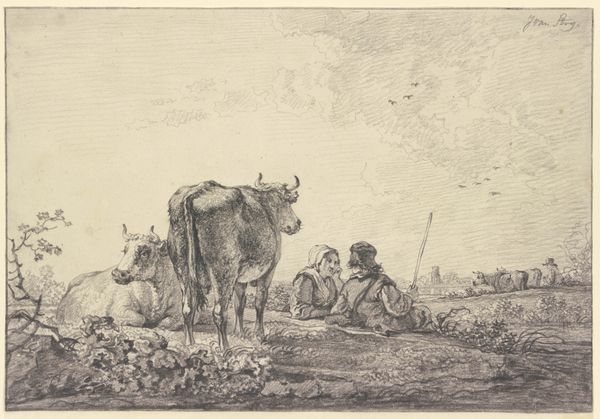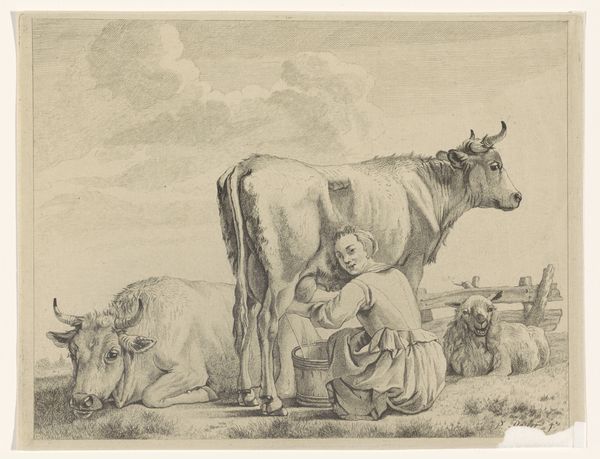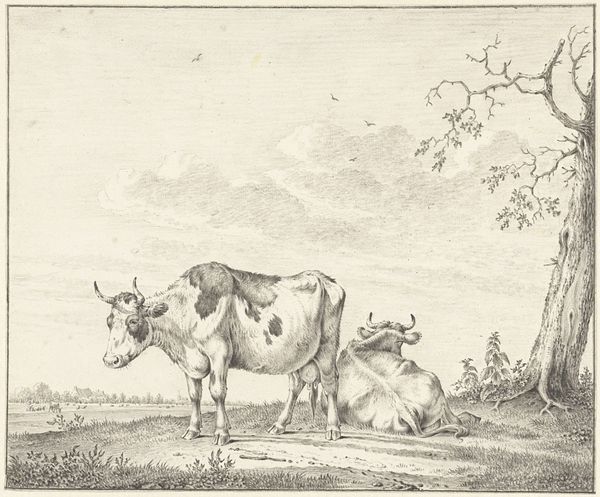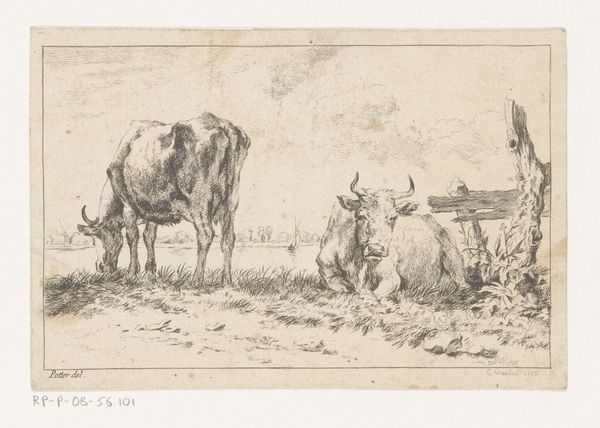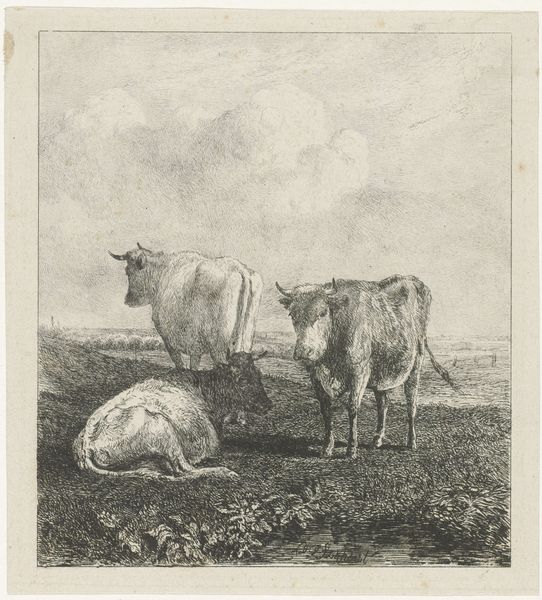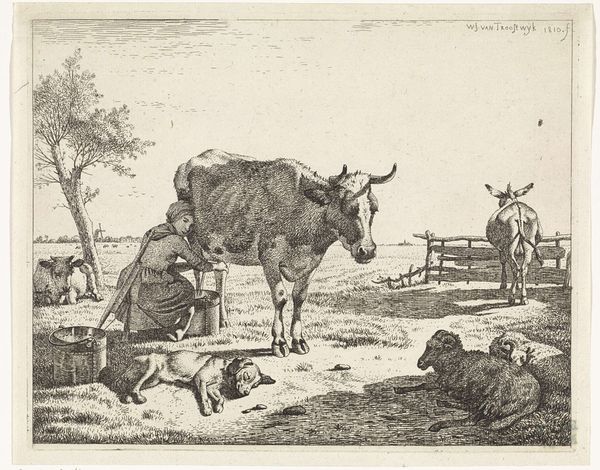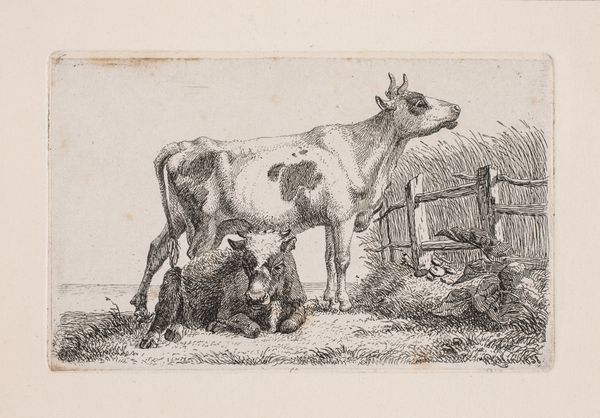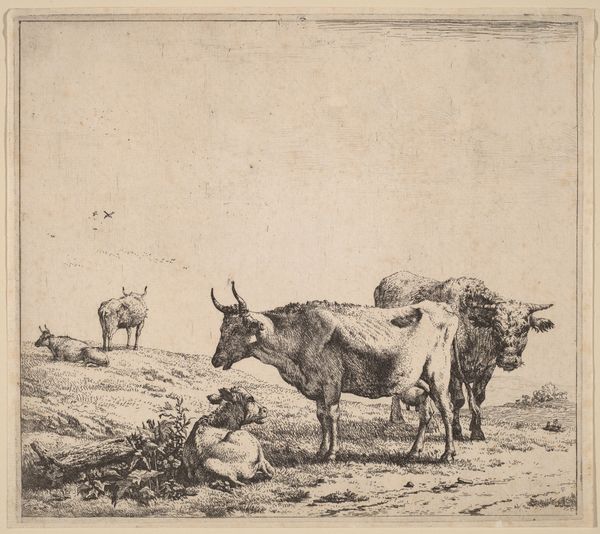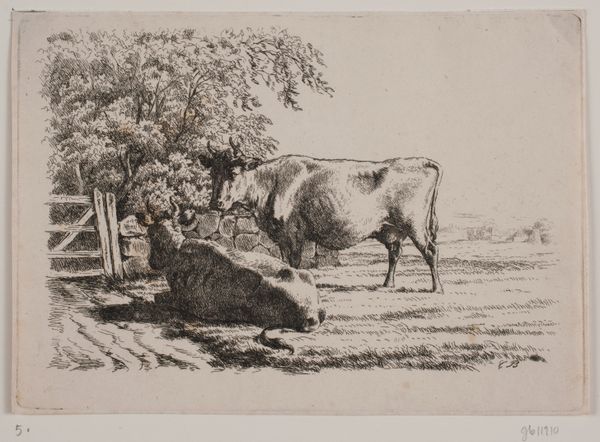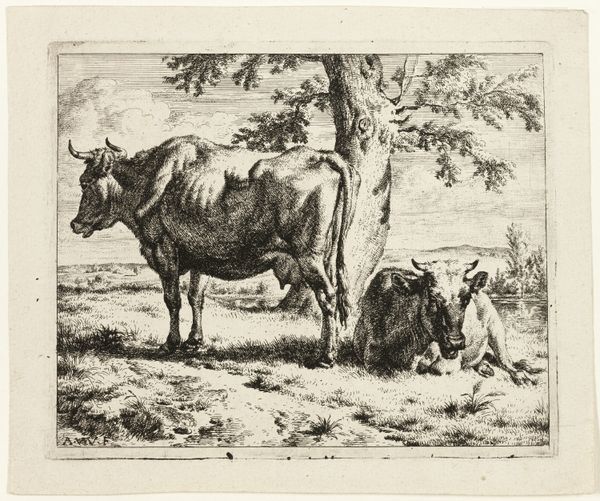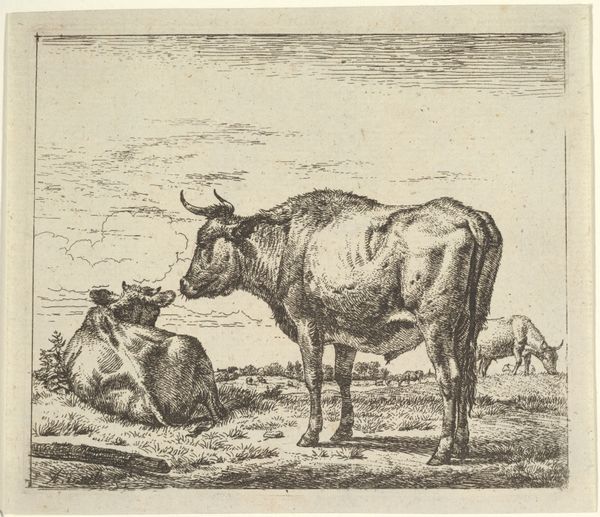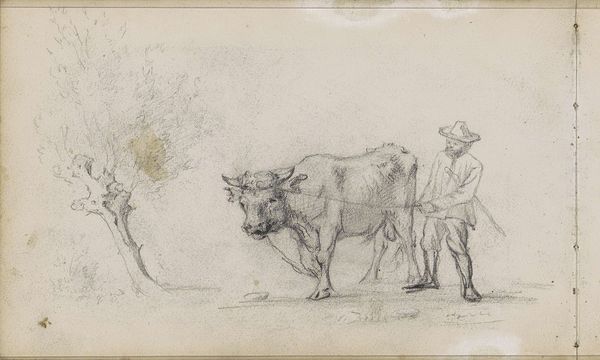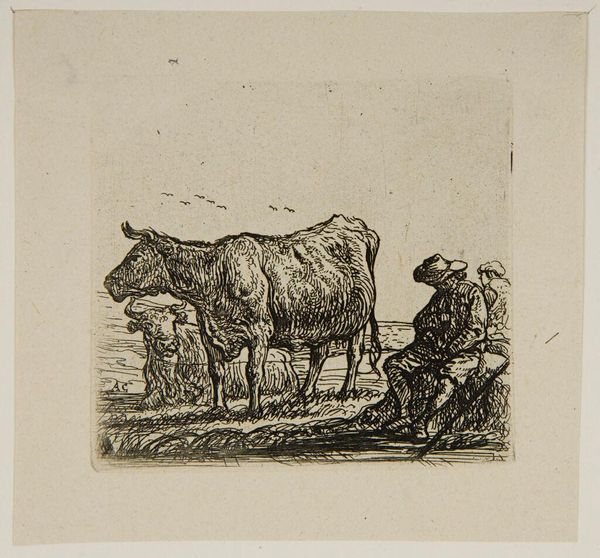
print, etching
#
dutch-golden-age
# print
#
etching
#
landscape
#
figuration
#
genre-painting
#
realism
Dimensions: 155 mm (height) x 247 mm (width) (bladmaal)
Editor: This is "En malkepige," or "A Milkmaid," an etching by Gerrit Claesz. Bleker, made in 1643. The scene feels very pastoral, but the details are quite striking, even a bit harsh in their realism. What do you see in this piece? Curator: What strikes me immediately is the intersection of gender, labor, and class within this seemingly simple rural scene. Bleker presents a woman engaged in manual labor, but her posture, bent beneath the cow, and the overall composition force us to consider her social standing and the broader socioeconomic structures at play in 17th-century Netherlands. How does her work intersect with ideas about domesticity and women’s roles at the time? Editor: It's interesting that you frame it that way, because on the surface, it seems like just a glimpse into everyday life. I hadn’t really considered the social commentary. The presence of the seated man feels important now. Is he an overseer? Curator: Precisely! Consider the male figure observing passively while the woman labors. How does that power dynamic reinforce existing gender norms? The etching medium itself, allowing for mass production and dissemination, means these societal observations reached a wide audience, subtly shaping perceptions. Editor: So, the image isn't just *of* a milkmaid, but a commentary *on* the societal position of women? Curator: Absolutely. And let's consider the realism of the etching style. It’s not idealized. The details are quite direct, making the political implications even more pointed, don't you think? Editor: Yes, the unvarnished details definitely contribute to a reading of this artwork as a social statement. I now have a deeper appreciation for how historical context shapes our understanding. Thanks! Curator: It's a process, and context is key.
Comments
No comments
Be the first to comment and join the conversation on the ultimate creative platform.
